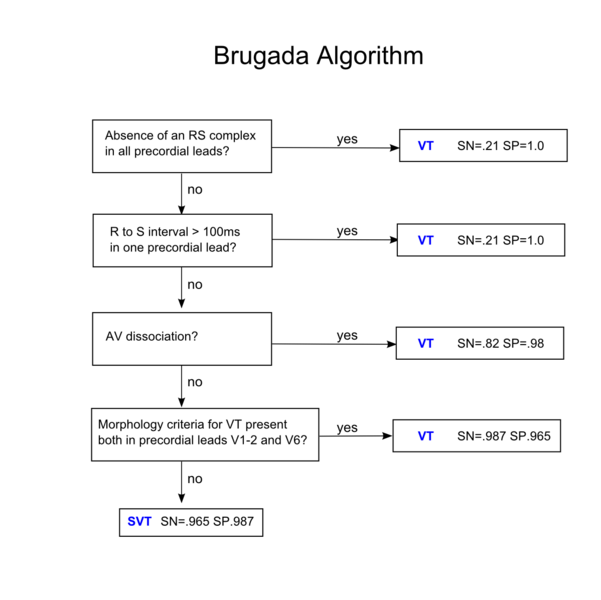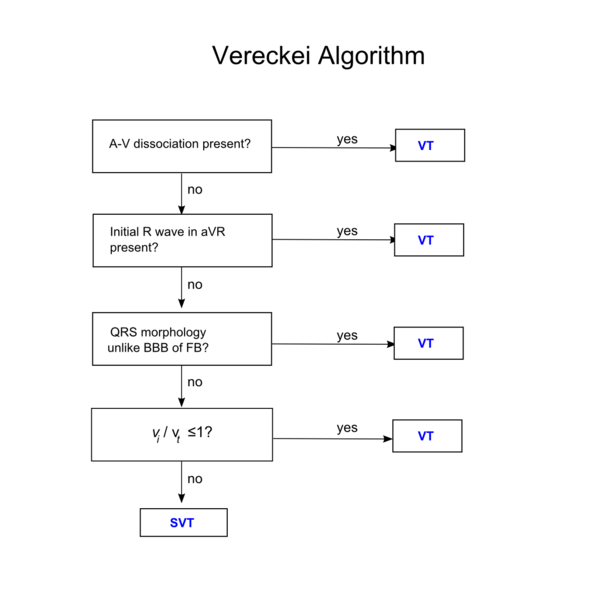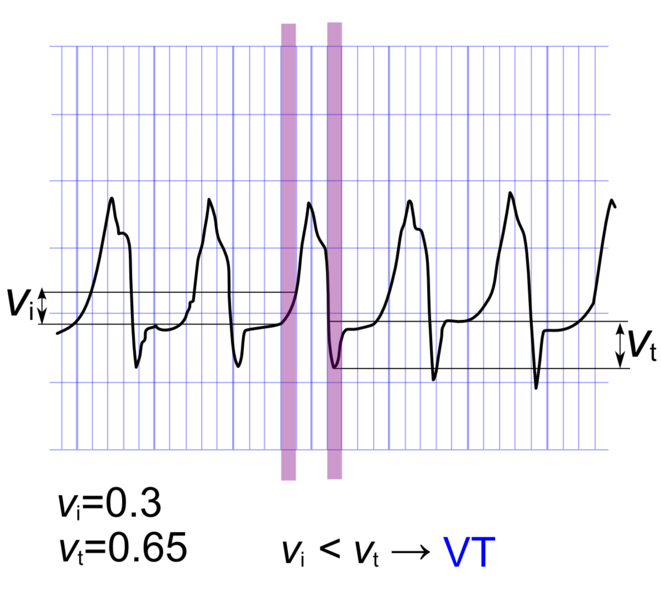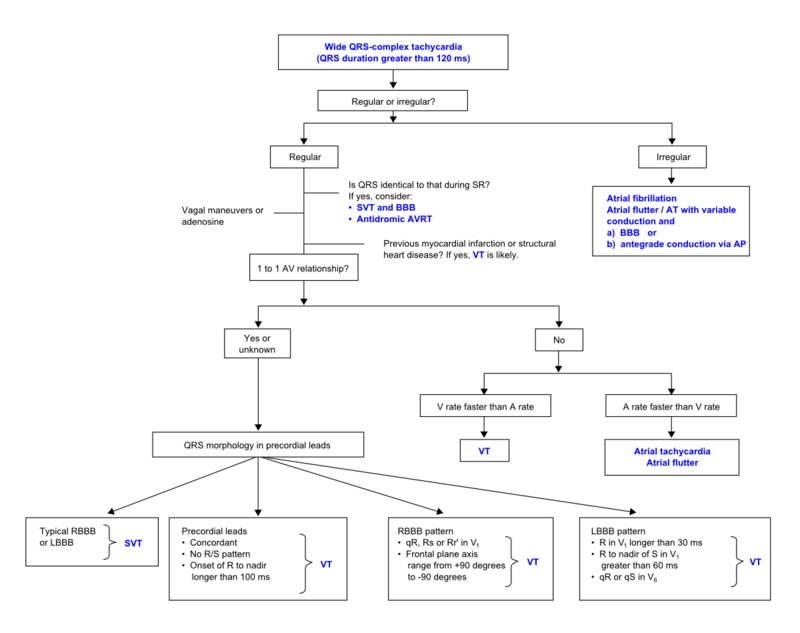Wide complex tachycardia differential diagnosis
|
Wide complex tachycardia Microchapters |
|
Diagnosis |
|---|
|
Treatment |
|
Case Studies |
|
Wide complex tachycardia differential diagnosis On the Web |
|
American Roentgen Ray Society Images of Wide complex tachycardia differential diagnosis |
|
Risk calculators and risk factors for Wide complex tachycardia differential diagnosis |
Editor-In-Chief: C. Michael Gibson, M.S., M.D. [1]
Overview
Differential Diagnosis
Algorithms to Distinguish VT from SVT
Brugada Criteria
| Absence of an RS complex in all precordial leads? | yes | VT SN=0.21 SP=1.0 | |||||||||||||||||||||||||||||||||||||||
| no | |||||||||||||||||||||||||||||||||||||||||
| R to S interval>100ms in one precordial lead? | yes | VT SN=0.21 SP=1.0 | |||||||||||||||||||||||||||||||||||||||
| no | |||||||||||||||||||||||||||||||||||||||||
| AV dissociation? | yes | VT SN=0.82 SP=0.98 | |||||||||||||||||||||||||||||||||||||||
| no | |||||||||||||||||||||||||||||||||||||||||
| Morphology criteria for VT present both in precordial leads V1-2 and V6? | yes | VT SN=0.987 SP=0.965 | |||||||||||||||||||||||||||||||||||||||
| no | |||||||||||||||||||||||||||||||||||||||||
| SVT SN=0.965 SP=0.987 | |||||||||||||||||||||||||||||||||||||||||

Vereckei Criteria
An algorithm has been proposed by Vereckei and colleagues. In addition to to do the traditional criteria, the voltage change on the EKG is used as a final discriminatory criteria. In this method, the voltage change during the initial 40 ms (v(i)) and the terminal 40 ms (v(t)) of the same QRS complex is used to estimate the (v(i)) and terminal (v(t)) ventricular activation velocity ratio (v(i)/v(t)). A v(i)/v(t) > 1 suggests SVT and a v(i)/v(t) ≤ 1 suggests VT.[1]

The method calculating Vi/Vt is shown below. Because the Vi/Vt is < 1, a diagnosis of VT is suggested by the tracing:

ACC Algorithm for Distinguishing SVT from VT
| A01 | |||||||||||||||||||||||||||||||||||||||||||||||||||||
| B01 | |||||||||||||||||||||||||||||||||||||||||||||||||||||
| {{{ C01 }}} | {{{ C02 }}} | ||||||||||||||||||||||||||||||||||||||||||||||||||||
| {{{ D01 }}} | {{{ D02 }}} | ||||||||||||||||||||||||||||||||||||||||||||||||||||
| {{{ E01 }}} | |||||||||||||||||||||||||||||||||||||||||||||||||||||
| {{{ E02 }}} | |||||||||||||||||||||||||||||||||||||||||||||||||||||
| {{{ F01 }}} | |||||||||||||||||||||||||||||||||||||||||||||||||||||
| {{{ G01 }}} | {{{ G02 }}} | ||||||||||||||||||||||||||||||||||||||||||||||||||||
| {{{ H01 }}} | {{{ H02 }}} | ||||||||||||||||||||||||||||||||||||||||||||||||||||
| {{{ I01 }}} | {{{ H03 }}} | {{{ H04 }}} | |||||||||||||||||||||||||||||||||||||||||||||||||||
| {{{ J01 }}} | {{{ J02 }}} | {{{ J03 }}} | {{{ J04 }}} | ||||||||||||||||||||||||||||||||||||||||||||||||||

The above figure is adapted from the American College of Cardiology algorithm.
References
- ↑ Vereckei A, Duray G, Szénási G, Altemose GT, Miller JM (2007). "Application of a new algorithm in the differential diagnosis of wide QRS complex tachycardia". European Heart Journal. 28 (5): 589–600. doi:10.1093/eurheartj/ehl473. PMID 17272358. Retrieved 2012-10-13. Unknown parameter
|month=ignored (help)